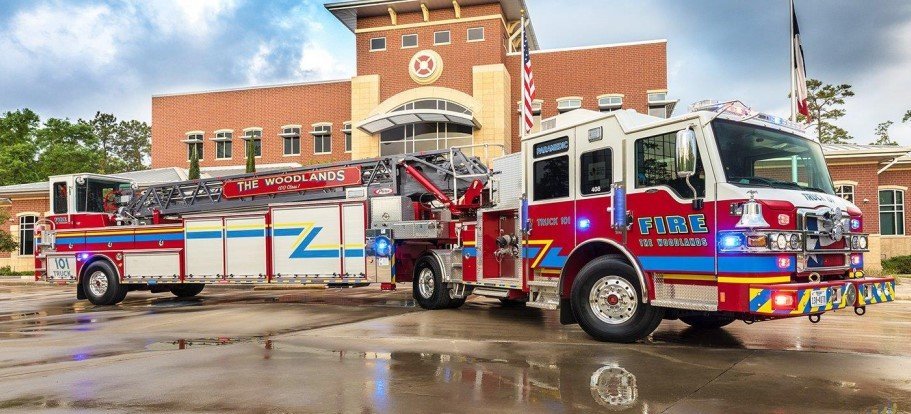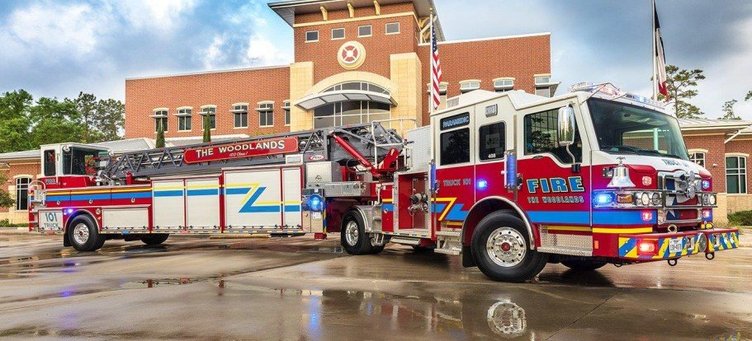Manteca’s frontline fire engines are showing signs of aging.
As a result, they are spending more and more time in the garage being worked on.
And their backup engines — one is as old as 26 years — are a struggle to keep in service as replacement parts are becoming harder to come by given some are now obsolete and are no longer being manufactured.
It is against that backdrop that the Manteca City Council Tuesday directed staff to secure two more fire engines at a combined cost of $2 million.
But by the time those engines arrive in Manteca to be put into service, the oldest engine in the backup fleet will have turned 29 years old.
That’s because the delivery time for new fire engines will be anywhere between two and three years.
And to top that off, the three fire engines on order that includes a replacement for the 100-foot aerial ladder truck that was authorized 13 months ago, will not bring up the city’s fire truck fleet to what is considered to be an optimum level when it comes to the age of engines.
City staff was directed to secure either lease and/or purchase financing.
It was noted if the city paid upfront in cash, they would save $100,000. But as staff noted they would need to come up with $1.9 million now that the city doesn’t have without dipping into reserves. The city will receive an $11,000 discount for ordering two fire engines at a time.
The dismal state of the city’s fire engine fleet was underscored by an observation made by Councilman Dave Breitenbucher, a retired Manteca firefighter who has championed the need for Manteca to add additional firefighters to make sure growth doesn’t overwhelm the city’s fire service.
“If we don’t have (dependable) engines, we don’t need additional manpower,” Breitenbucher said.
Tiller ruck already ordered
The new aerial ladder truck the Manteca City Council budgeted for and authorized ordering in January 2022 is capable of being driven into places the current aerial truck can’t go nor can the standard fire engine.
That’s because the aerial ladder truck the city has ordered is a “tiller truck” that’s also known as a hook-and-ladder truck.
The tractor drawn aerial truck requires two drivers. One driver at the rear of the apparatus controls the front and rear wheels of the tiller. The driver in the cab in front handles steering. The Tracy fire agency operates such a truck.
The tiller truck carries a price tag of $1,707,772 that the council locked in last year.
The truck was expected to take two years to be delivered. As such, it could arrive in Manteca before the end of the year.
Because the city locked in the price it will not be subject to inflation and component price increases.
The current aerial platform truck bought in 2008 for roughly $1 million is nearing the end of its useful frontline lifespan. It is often in the shop for repairs. There have been occasions when the aerial truck has broken down on the road side to be forced out of service.
A committee scrutinized municipal needs, firefighting trends, and weighed the cost effectiveness of a tiller truck versus an aerial truck like Manteca currently has in relation to the best possible outcomes in emergency situations.
Based on that, the tiller truck was seen as the best option for the community.
In a report to the council, Fire Chief Dave Marques last year noted “with several large buildings in the city, including new construction such as the Great Wolf Lodge, it is imperative we maintain a working ladder truck at all times.”
Aerial trucks more effective
in a wide array of situations
Given aerial ladder trucks are significantly longer than a standard fire truck, they can be outfitted with the widest possible variety of extrication tools making it the primary source of rescue equipment for operations.
It is why the current ladder truck responds to every high-speed vehicle accident within the city as well as on Highway 99 and the 120 Bypass.
The aerial truck, specifically one that is a tiller, has other advantages.
*Manteca Fire has used it to deploy critical streams of water to housing rooftops in a quicker fashion. That is because it can reach over and above vehicles parked on the street and attack fires from above. In doing so it is quicker and more effective that just deploying ladders and attacking a fire from the ground.
*It’s birds-eye approach is effective at keeping fire from spreading as experienced when a fireworks-related call threatened several nearby homes.
*As more infill occurs such as the three-story apartment complex replacing several homes on Stewart Street, older narrow city streets will be serving denser and taller housing.
*They deliver and direct more intense water streams in stubborn fires that are hard to control and can easily spread such as the tire company on North Main Street several years ago.
*It is part of the reason the city has — and helps maintain — its “2” rating by the Insurance Standards Organization. That typically translates into more favorable rates for insurance coverage for residents and businesses.
“Cities that are the size of Manteca typically have a ‘”3”. Very, few cities have a “1” rating.
To contact Dennis Wyatt, email dwyatt@mantecabulletin.com






